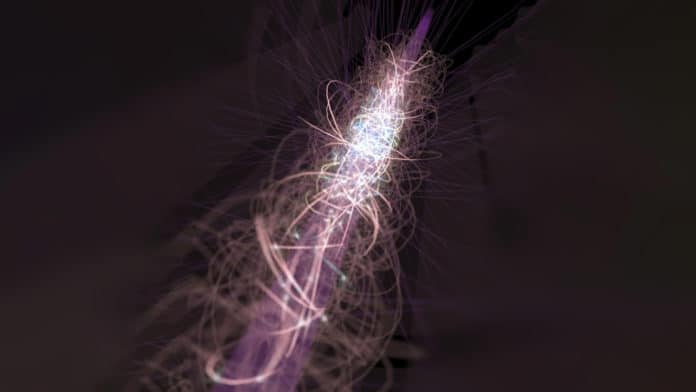Almost four decades ago, a technique called laser cooling was demonstrated, which revolutionized atomic physics over the following decades. Up until now, the method has been used widely in many fields, including studies on degenerate quantum gases, quantum information, atomic clocks, and tests of fundamental physics.
However, this technique has not yet been applied to antimatter.
In a new study, scientists demonstrated laser cooling of antihydrogen for the first time. The groundbreaking feat produces colder antimatter than ever before and enables an entirely new class of experiments, enabling scientists to learn more about antimatter in the future.
The study was conducted by Swansea University physicists, as leading members of the ALPHA collaboration at CERN.
In their experiment, scientists reported that when the atoms scatter light from an ultraviolet laser beam, the temperature of antihydrogen atoms trapped inside a magnetic bottle dropped gradually. It also decelerates the atoms and reduces the space they occupy in the bottle — both vital aspects of future more detailed studies of antimatter properties.
Along with decreased energy of antihydrogen atoms, there was also a reduction in the range of wavelengths that the cold atoms can absorb or emit light on. This reduced motion hence prompts narrowed spectral line.
According to scientists, this latter effect will enable a more precise determination of the spectrum, which could reveal the antihydrogen atoms’ internal structure.
Swansea University’s Professor Niels Madsen, responsible for the experimental run, said: “Since there is no antihydrogen around, we have to make it in the lab at CERN. It’s a remarkable feat that we can now also laser-cool antihydrogen and makes an exact spectroscopic measurement, all in less than a single day. Only two years ago, the spectroscopy alone would take ten weeks. Our goal is to investigate if our antihydrogen properties match those of ordinary hydrogen as expected by symmetry. A difference, however small, could help explain some of the deep questions surrounding antimatter.”
Professor Stefan Eriksson, who was responsible for the spectroscopy lasers involved in the study, said: “This spectacular result takes antihydrogen research to the next level, as the improved precision that laser cooling brings puts us in contention with experiments on normal matter. This is a tall order since the spectrum of hydrogen we compare with has been measured with a staggering precision of fifteen digits. We are already upgrading our experiment to meet the challenge!”
Journal Reference:
- Baker, C.J., Bertsche, W., Capra, A. et al. Laser cooling of antihydrogen atoms. Nature 592, 35–42 (2021). DOI: 10.1038/s41586-021-03289-6
